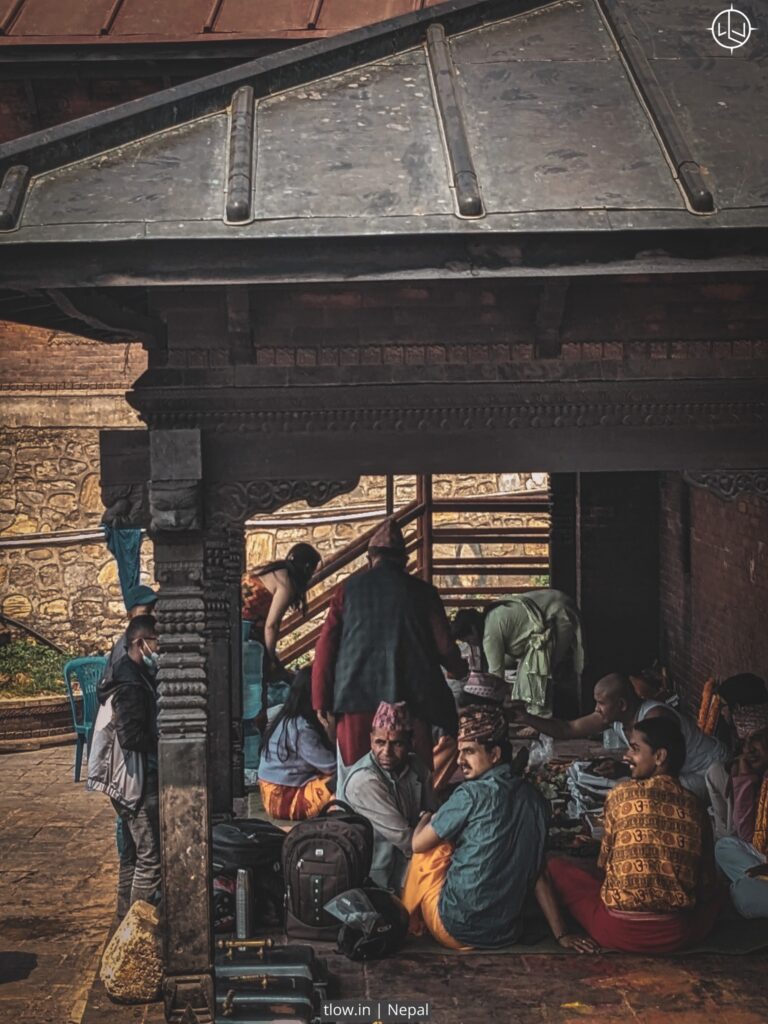
10 Awesome Facts about Pashupatinath, Nepal
If you are looking for a place that has it all – history, culture, religion, art, nature, and mystery – then look no further than Pashupatinath Temple in Kathmandu, Nepal. This temple is one of the most sacred and fascinating Hindu temples in the world, and it will blow your mind with its beauty and wonder. Here are 15 facts you need to know about Pashupatinath Temple before you visit:
The origin of Pashupatinath Temple is a mystery that even Sherlock Holmes would have a hard time solving. There are many legends and stories about how this temple came into existence, but one of the most popular ones is that a cow used to come here every day and offer her milk to the ground. When the owner of the cow dug up the place, he found a four-faced lingam (a symbol of Shiva) that later became known as Pashupatinath.

The temple is so old that it makes your grandma look young. The temple’s existence is recorded as early as 400 CE, but it is believed to be much older. The original temple was made of wood and was destroyed by termites. The current temple was built in the 15th century by King Lichhavi and is made of stone and metal.
The main temple is a masterpiece of architecture and craftsmanship. It has a cubic structure with four silver-plated doors and a two-storied roof covered with gold. Inside the temple, there is a shining four-faced lingam that represents the four aspects of Shiva: Tatpurusha (east), Aghora (south), Vamadeva (north), and Sadyojata (west). Above the lingam, there is a fifth face called Ishana that represents the supreme aspect of Shiva.

The temple complex is like a mini-city with more than 500 temples, shrines, ashrams, and ghats (steps leading to the river). Some of the notable temples are Guhyeshwari Temple (dedicated to Shiva’s consort Parvati), Kirateshwar Mahadev Temple (dedicated to Shiva as the hunter god), Gorakhnath Temple (dedicated to a famous yogi), and Budhanilkantha Temple (dedicated to Vishnu).
The temple complex is also a zoo with many animals, especially monkeys, deer, and goats. These animals are considered sacred and are protected by the temple authorities. The monkeys are especially playful and mischievous and often steal food from visitors. Don’t be surprised if you see a monkey running away with your banana or your camera.

The temple complex is also a museum with many paintings and sculptures depicting various gods, goddesses, apsaras (celestial nymphs), and erotic scenes in different parts of the temple. Most of these artworks are done in gold and reflect the artistic skills of the Nepalese craftsmen. You will be amazed by the beauty and diversity of these artworks.
The temple complex is also a crematorium with many funeral pyres burning along the river. The Bagmati River is considered holy and purifying by Hindus, and many people wish to die and be cremated here. There are several ghats along the river where funeral pyres are lit and ashes are scattered into the water. The most important ghat is Arya Ghat, where members of Nepal’s royal family are cremated. You will witness the cycle of life and death here.

The temple complex is also a party place with many festivals and celebrations happening throughout the year. The most important festival is Maha Shivaratri, which means “the great night of Shiva”. It falls in February or March and marks the start of spring. On this day, thousands of devotees flock to the temple to worship Shiva with offerings of milk, flowers, fruits, cannabis, and bhang (a drink made from cannabis). They also chant mantras, sing songs, dance, and play drums throughout the night. You will feel the energy and joy here.
Another important festival is Teej, which falls in August or September and celebrates the union of Shiva and Parvati. On this day, married women fast for their husbands’ longevity and happiness, while unmarried women fast for finding a good husband. They also dress in red sarees, adorn themselves with jewelry, apply henna on their hands, and visit the temple to pray to Parvati. You will see the love and devotion here.

Another important festival is Bala Chaturdashi, which falls in November or December and commemorates the death of a prince named Bal Narsingh Malla who was killed by a snake bite while hunting in the forest near Pashupatinath Temple. On this day, people light lamps on the graves of their ancestors and offer them sesame seeds, rice, and flowers. They also stay awake all night and recite the names of their deceased relatives. You will feel the respect and gratitude here.
Pashupatinath Temple is not only a religious site, but also a social and educational hub. There are many schools, colleges, hospitals, libraries, and orphanages run by the temple authorities. The temple also provides free food, shelter, and medical care to the poor, the elderly, and the homeless. You will see the compassion and generosity here.

Pashupatinath Temple is also a place of mystery and mysticism. There are many sadhus (holy men) and yogis who live in the temple complex and practice various forms of asceticism, meditation, and tantra. Some of them have long dreadlocks, wear animal skins, smear ashes on their bodies, and smoke cannabis. They are believed to have supernatural powers and are revered by the devotees. You will see the magic and wonder here.
Pashupatinath Temple is also a place of controversy and conflict. The temple has been attacked and looted several times by Muslim invaders, Hindu fanatics, and Maoist rebels. The temple has also been criticized for its discrimination against women, Dalits (lower castes), and non-Hindus. The temple has also been accused of mismanagement, corruption, and pollution. You will see the challenges and struggles here.

Pashupatinath Temple is also a place of diversity and harmony. The temple welcomes people of all faiths, cultures, and backgrounds. The temple is visited by Hindus, Buddhists, Jains, Sikhs, Christians, Muslims, Jews, and others. The temple also hosts interfaith dialogues, cultural exchanges, and peace initiatives. You will see the unity and tolerance here.
Pashupatinath Temple is also a place of beauty and wonder. The temple offers a stunning view of the Himalayas, the Bagmati River, and the Kathmandu Valley. The temple also has a serene atmosphere that fills the visitors with peace and joy. The temple is a symbol of Nepal’s rich heritage, spirituality, and identity. You will see the glory and grace here.










